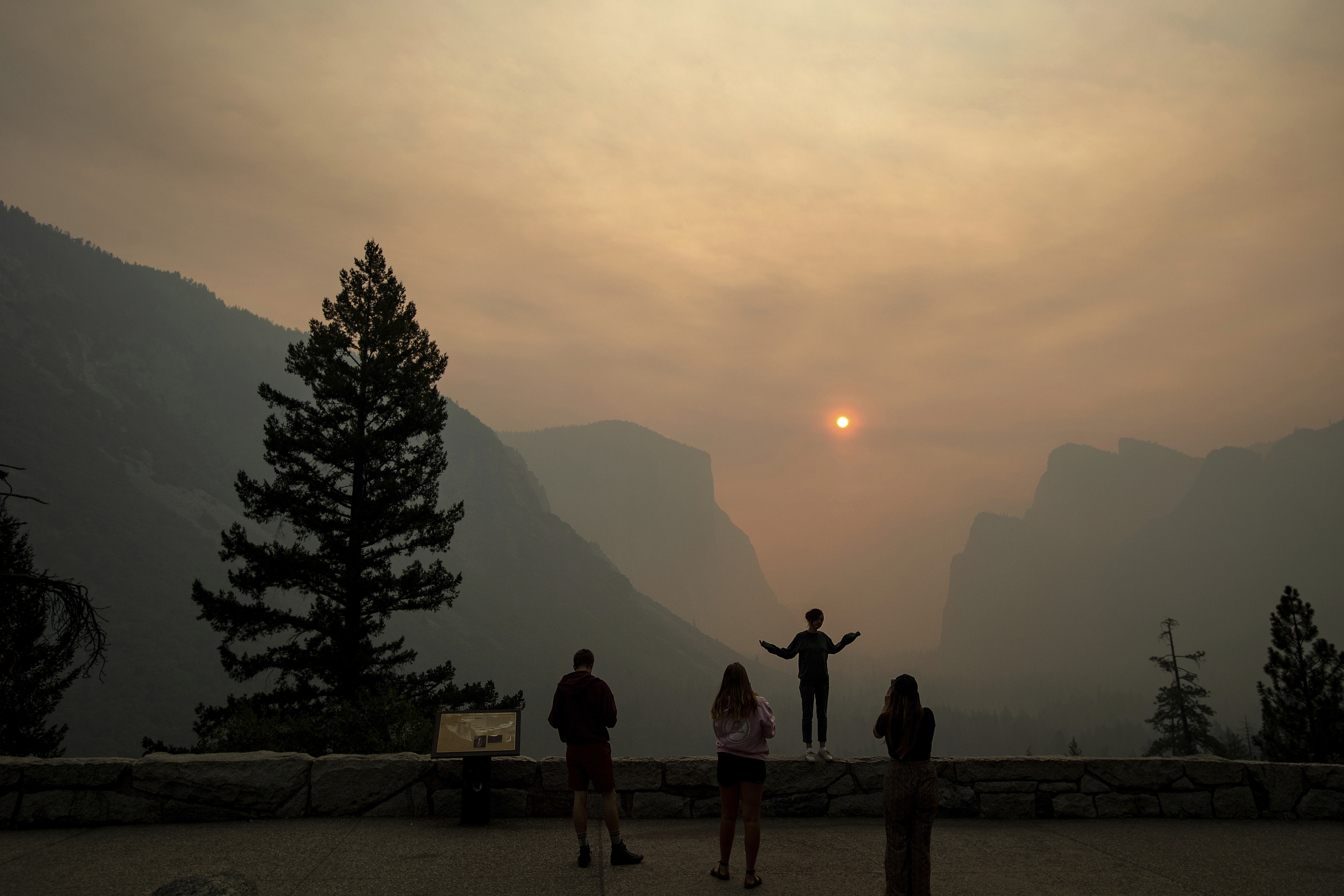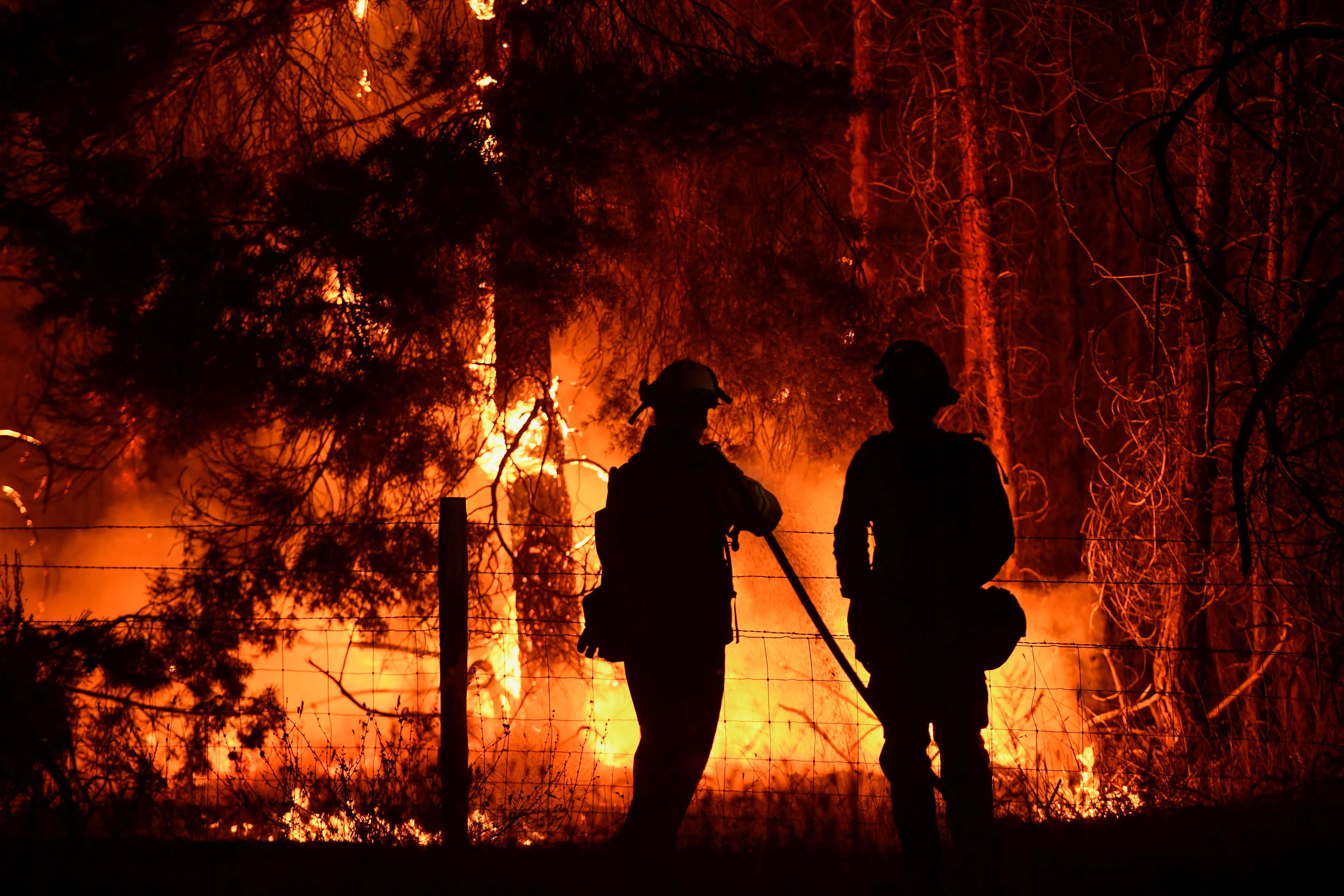What to Know
- The Caldor Fire in El Dorado and Amador counties has burned nearly 215,400 acres and is 44% contained.
- The blaze has destroyed at least 920 structures and damaged another 73.
- Nearly 28,000 structures remain threatened.
Tens of thousands of people forced to flee South Lake Tahoe were allowed to begin returning to their homes after evacuation orders were downgraded to warnings Sunday afternoon as crews made progress against the Caldor Fire.
The orders that sent 22,000 people in and around the resort fleeing last week were reduced to warnings as the fire virtually stalled a few scant few miles from the forest areas straddling the California-Nevada border.
The threat from the Caldor Fire hasn’t entirely vanished, but downgrading to a warning meant those who wish could return to their homes in what had been a smoke-choked ghost town instead of a thriving Labor Day getaway location.
In total, Cal Fire officials said that 43,195 people were forced to evacuate as a result of the Caldor Fire, and evacuees from the city of South Lake Tahoe made up about half of that total.
In the days prior, while most residents on the western side of the fire were allowed to return to their homes, residents in the more populated area around Lake Tahoe waited for permission to come back.
Tony Mora, who proudly shared he's lived in South Lake Tahoe his whole life, could barely contain his excitement to return home.
"I’m feeling happiness and joy that my house didn’t burn down so we can all go back in,” Mora said.
He and his family had bounced around between several different shelters for evacuees over the past few days, eventually landing at the Red Cross emergency shelter at the Reno-Sparks convention center.
Get a weekly recap of the latest San Francisco Bay Area housing news. >Sign up for NBC Bay Area’s Housing Deconstructed newsletter.
"Everybody’s ready to go back to work so we’re excited,” Mora continued. He wheeled his dad out of the shelter on a walker, and his dad gave a smile and a thumbs-up to onlookers as they prepared to make the drive to their South Lake Tahoe home.
Caldor Fire Maps
- Evacuation map: see where evacuation orders and warnings are in effect
- Burn map: see where the fire has burned and where hotspots are
- Structure status map: check on the status of structures in the burn zone
The evacuation shelter in Reno had 240 people staying there on Saturday night, Red Cross said. By the afternoon when word reached the shelter that South Lake Tahoe residents could return, some evacuees wept tears of joy, others packed up all their belongings to ride on the school buses sent to shuttle them home. Others said they weren't ready to return yet, they worried that they wouldn't be able to get what they needed with businesses by the lake still closed.
California Highway Patrol officers began taking down roadblocks on State Route 50 at Stateline, Nevada on Sunday, KCRA-TV reported. Members of the National Guard who had helped on the fire had left the area by that time.
Evacuees in cars packed to the brim with belongings trickled down the newly-open State Route 50 to South Lake Tahoe all Sunday evening. Residents yelled their thanks to first responders as they drove passed and honked as they passed a transportation sign illuminated with the words "WELCOME HOME."
Joseluis Mancano made his way back to his South Lake Tahoe home, he was eager to return because he is starting a new job.
"It was a happy day," he remarked.
"But at the same time, I am sad because at the same time many people lost their houses over there in the fire, everything lost," Mancano noted. "It's terrible."
Cal Fire reports that 713 residences and 208 other structures have been destroyed by the Caldor Fire.
Mandatory evacuation orders on the Nevada side of the state line were lifted Saturday, although Douglas County authorities urged residents to stay alert, saying the fire still has the potential to threaten homes.
The wind-driven fire, which at its peak had burned as much as 1,000 acres an hour in the northern Sierra Nevada, was mainly held within current containment lines overnight and was now 44% contained, according to Cal Fire.
No homes had been lost on the eastern side of the fire nearest to the lake and crews managed to carve more fire line along one edge of a fiery finger, which hadn’t moved east, Tim Ernst, a fire operations chief, said at a morning briefing.
“Everything has held real well” despite some flareups among timber and some hot spots in the west and southeastern sections of the nearly 340-square-mile (880-square-kilometer) blaze, Ernst said.
Winds that drove the flames through tinder-dry trees, grass and granite outcroppings eased in recent days, and fire crews were able to double down on bulldozing, burning or hacking out fire lines.
The fire that began on Aug. 14 has destroyed more than 700 home and injured nine firefighters and civilians, Cal Fire reported.
California and much of the U.S. West have seen dozens of wildfires in the past two months as the drought-stricken region sweltered under hot, dry weather and winds drove flames through bone-dry vegetation.
In California, nearly 14,500 firefighters were battling 13 large, active fires. Since the year began, more than 7,000 wildfires have devoured 3,000 square miles (nearly 8,000 square kilometers), Cal Fire said.
No deaths had been reported specifically from the fires. However, authorities said two people assigned to fire-related duties died from illness this week, officials said.
Marcus Pacheco, an assistant fire engine operator for Lassen National Forest with 30 years of experience, died on Thursday. He was assigned to the Dixie Fire burning north of the Caldor Fire, authorities said.
Other details weren’t immediately released.
The Dixie Fire began in mid-July in the northern Sierra Nevada and is the second-largest wildfire in recorded state history. It has burned nearly 1,400 square miles (3,625 square kilometers) in five counties and three national parks and forests, according to Cal Fire.
A retired firefighter who was hired to help with the French Fire died from complications of COVID-19, authorities said.
He was identified as Allen Johnson.
“Our team, the firefighting community and the world lost a great friend, mentor, teacher and comrade last night,” said a Facebook posting last Wednesday from California Interagency Incident Management Team 14.
The French Fire in Kern County was 52% contained after burning about 41 square miles (106 square kilometers).
Fire concerns have shut down all national forests in the state.
California has experienced increasingly larger and deadlier wildfires in recent years as climate change has made the West much warmer and drier over the past 30 years. Scientists have said weather will continue to be more extreme and wildfires more frequent, destructive and unpredictable.
The Associated Press contributed to this report.



